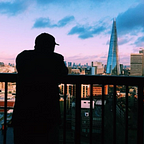Tapping into the truth about bottled water drinkers
Streetbees spoke to more than 3,500 people around the world to uncover their attitudes towards, and motivations behind, purchasing one of the simplest — and most popular — products on the market.
In 2013, the global bottled water industry was valued at just over $150bn; by 2021, it will be worth $350bn. But while we’re aware of the industry’s continued expansion, what do we know about the consumers who are powering it?
Bottled water: the Great Equaliser?
We spoke to people across eight countries and discovered something striking: no matter where they live or how old they are, once a consumer starts buying bottled water, they tend to keep doing so.
For instance, the profile of bottled water drinkers aged 18–25 worldwide looks something like this: 2 in 3 are frequent users, buying bottles either every day, or a few times per week.
Their primary motivation for doing so is convenience, with 7 in 10 citing this as a main driver of purchase. This means they are more likely to drink water on the go: 2 in 3 drink while travelling somewhere.
Age ain’t nothing but a number
The remaining age brackets — 26–35s, 36–45s, over-46s — have near-identical profiles, but with slight differences in the extra ingredients people add to enhance flavour.
Fruit becomes a marginally more popular addition for 26–35s (10%) and 36–45s (11%), before dropping down to 6% for those 46 and over.
A similar trend is in place around tap water consumption. Almost 1 in 3 of 26–35s try to avoid drinking it, with the figure rising to 1 in 2 among 36–45s, and dropping back to below 30% for over-46s.
This stable demand across age ranges is healthy for the industry, but how do brands ensure this maintains throughout consumers’ lives? They need a deeper level of insight into the day-to-day lives of their customers, capturing — and understanding — real life moments.
So if age isn’t a useful demographic, region must be — right?
Not entirely. The differences between developed and emerging markets are not as pronounced as you might think, even in countries such as Kenya, South Africa and Nigeria, where unimproved water sources account for a large portion of consumption.
In Western markets (the UK & US), 1 in 3 try to avoid drinking tap water. In emerging markets — including China, India and the Philippines, in addition to the aforementioned African nations — that figure is the same.
The nuances do appear though — most frequently within matters of taste, or purchasing habits.
In the UK and US, 1 in 2 choose bottled water for its taste; in emerging markets, that figure is 1 in 3. As for additional ingredients to water, 15% of those in developed countries add fruit, twice the figure of those elsewhere.
Multipack purchases are also much more popular in the UK and US, too; 1 in 2 purchase their bottles of water in this format, whereas just 1 in 5 do in Asia and Africa.
What does this mean for brands?
So, the bottled water market is a particularly unusual one. Factors like age or region don’t really act as differentiators — the challenge instead, for brands, is converting people early to becoming bottled water consumers at all. That’s because once they start the habit, they don’t stop.
How to do this? Well, for bottled water drinkers, it’s all about a healthy lifestyle.
Almost every single respondent who drinks bottled water said they make an effort to eat healthily, while 2 in 3 say a good night’s sleep is a priority for them, and a further 55% say exercising regularly is an important part of their routine.
Therefore, for a product as omnipresent as bottled water, brands must look beyond who their customers are, and focus more on how they act. Proactively supporting consumer aspirations around healthy living will give them the edge against competitors in an already-crowded market.
More findings from the wide-ranging study include:
- 7 in 10 people across the US and UK say they recycle their bottles after use, compared to just 1 in 2 in Asian markets and 1 in 3 or lower in Africa
- Sparkling water is more popular among men (35%) than women (28%)
- In Asian markets, 83% of consumers purchase their bottled water at a convenience store — considerably higher than anywhere else in the world
***
Streetbees can help your business understand markets in real time.
Get in touch to find out more.
Follow us on LinkedIn and Twitter.
A quick word on our methodology: The figures in the article are taken from Streetbees community members in the UK, US, India, China, The Philippines, Nigeria and South Africa, collected in May 2018. All of the data was collected by mobile and web surveys, and is accurate to within 3 percentage points 19 times out of 20.
